France is a country located in Western Europe and is the largest exclusive economic zone in the world due to its many coastal territories. France is also known as the city of love and is famous for the Eiffel Tower and Notre Dame Cathedral.
The people are also well-known for their artistic inclination and diverse food, such as macarons, baguettes, and croissants. In this travel itinerary of 3 weeks in France and Spain, I’ll show you how you can cross the border with a rental car, bus, or if you prefer to travel via air.
Conversely, Spain is in Southwestern Europe, with the largest part on the Iberian Peninsula and the fourth most populous EU member state. Spain is well-known for its music and dance, particularly Flamenco.
It is also famous for its food, Mediterranean beaches, and football. Spain has many festivals year-round, which will be discussed in the itinerary below. These two countries in Southern Europe are definitely worth a visit at least once.
If you have the stamina, you might want to include Italy on this trip and plan a 3-week adventure through Spain, Italy, and France.
THINGS TO KNOW BEFORE GOING TO FRANCE AND SPAIN
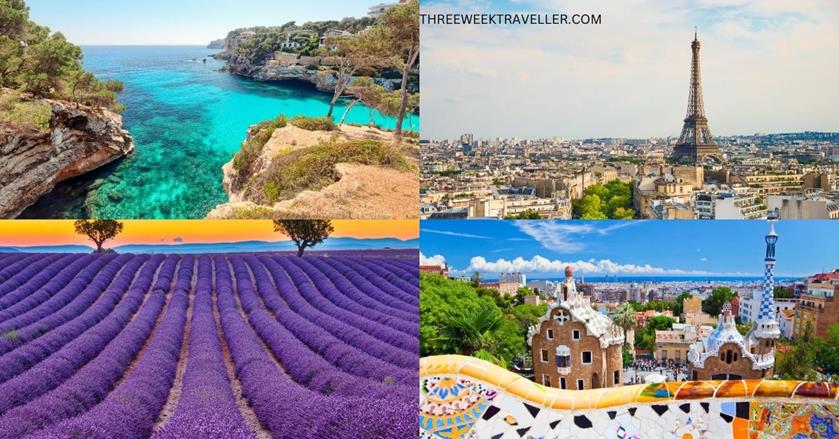
Before you go on your trip, remember these things about visiting Spain and France. This list of information will give an idea of when is the best time to go, how much it will cost you, how to get around, and more travel tips.
When is the best time to go to France and Spain
The best time to go to France and Spain is either in the spring or early autumn season. During this time, there are noticeably fewer crowds, the prices are back to normal, and it’s neither too hot nor too cold.
The summer season in France is from June to August and also the peak season. At the same time, winter is from December to February. Monsoon in France is usually during October.
Conversely, in Spain, summer is from June to September, and the peak season is from June to August. The rainy season in Spain is quite long, from September through January, making the winter months the wettest months.
You can also look at our 3 weeks in Europe article, where we share six travel itineraries you can choose from depending on your budget. You can also check our list of best places for a summer trip or the best 3-week spring destinations.
Are 3 weeks enough for France and Spain
3 weeks in France and Spain isn’t enough; exploring them from top to bottom requires at least three weeks per country. However, there is no need to fret as I created an efficient list of all the must-see places in both countries so you wouldn’t miss out even if you stayed for a shorter duration.
If you prefer to travel to each country separately but have limited time, you can look at our 3 weeks in Spain and 3 weeks in France travel itineraries. Then see if you want to do that or if you think you can combine both countries in one trip.
What to pack
The packing list for Spain and France trip will vary depending on the season you plan to go. The general idea is if you want to do lots of hiking, it’s best to pack good walking or hiking shoes. Bring a few swimming clothes, goggles, and sunnies if you want to spend most of your time on the beach doing water activities.
For those visiting religious sites such as cathedrals, bring modest clothing. We have a packing list for a 3-week trip, a separate packing list for summer, what to pack for winter and a packing guide for spring.
How to get around
To maximize your 3 weeks in France and Spain, you must know how to get around these countries and cross the borders.
The most common and convenient way to travel in France is through SNCF, a state-owned rail network that is one of the best in Europe. It is fast and competitively priced, particularly if you booked in advance.
You could also explore France’s rural areas by bus, and if you want to arrive faster, you could opt to take a plane and catch a domestic flight. For those who wish to complete control of their travel schedule, you could rent a car instead. I personally used the train and found it a very scenic ride, primarily through the Alps.
The best way to travel through Spain is by taking a train called Alta Velocedad Espanola. For budget-conscious travellers, you could opt to use the bus instead, and for those on a tight schedule and willing to pay a more expensive fare, you could ride the plane rather.
Language and currency
French is France’s official language. People here don’t speak much English, so knowing common French phrases or using an online translator app would be helpful. The French franc is France’s currency.
Credit cards are widely accepted here, with Mastercard, Visa, and Maestro being the most common, but bringing cash is still paramount because some establishments don’t accept cards.
Spain’s official and most commonly used language are Spanish. Like in France, local English speakers usually can be found in touristy areas. Knowing the most frequently used phrases and having a translator app would be handy.
Spain’s current currency is Euro. It is advisable to bring cash, but some establishments accept credit/bank cards.
Average travel cost for 3 weeks in Spain and France
The interesting thing about going on a trip between these two countries is how the cost varies. Despite sharing a land border, the prices in France are significantly higher than in Spain.
Paris is one of the most expensive cities in the world. So if you’re on a budget, I recommend you try to see everything you want to see in 2-3 days. However, Madrid is also not too affordable, but it’s not as expensive as Paris.
On average, $2,000 is an excellent medium budget for 20 days in France and Spain. Accommodation will be the most pricey, especially for Paris. But you can offset that in other parts of the country.
For those on a shoestring budget, this itinerary can be done for $1,500 if you don’t mind staying in dorm hostels, using local buses, and consuming street food.
If you’re looking for a luxurious trip, $4,000 will do the job. You can splurge on luxury hotels, private tours, and dine at high-end restaurants. Don’t forget our breakdown of what a 3-week trip usually costs.
This number excludes the cost of flights to get to these countries and fly back home. You should also get travel medical insurance coverage to avoid spending unplanned expenses on your trip. It’s worth the extra money to have peace of mind.
Visa and COVID-19 protocol
France and Spain are members of the European Union and part of the Schengen States. This means that these two countries implement the same visa policies as the other members of the Schengen Area.
So, if you have a passport from the other EU nation, you can travel to these countries with freedom. Meaning you can enter and stay for as long as you want.
For those who hold a passport from most countries in America, Europe, the UK, New Zealand, Australia, Malaysia, Singapore, Japan, and South Korea, you can enter and travel to France and Spain for up to 90 days in 180 days.
But remember, the number of days stacks up. I mean that if you spend 14 days in Spain, cross the border to France. The counter doesn’t restart. Instead, it continues.
If your country is not listed here, this means that you must secure a Schengen visa in advance before your trip.
Other travel tips
I like booking half of the things in advance, such as the hotel where I’ll land and the car rental. This ensures that I have things ready when I kick off my trip. But if I’m going during the peak season, I book everything beforehand.
This is because France and Spain are both super famous with tourists worldwide. Leaving accommodating booking in last minute means I’ll pay more for such shitty hotels. Here’s a list of travel services I personally use and recommend.
PINNED MAP OF MUST-SEE PLACES IN FRANCE AND SPAIN
Click the enlarge button on the top right corner. Credit: map data: Google
3 WEEKS IN FRANCE AND SPAIN ITINERARY
Aside from food and landmarks, France is also well-known for its sandy beaches, snow-covered mountains, chateaus, and other historical places. France is perfect for everyone, whether you love nature, adrenaline-filled activities, or are a foodie or history buff.
It has been previously discussed that Spain is famous for its festivals or fiestas. Some world-famous fiestas to anticipate are the San Juan Bonfires Festival and La Tomatina. Besides the world-class festivals, they also have tons of UNESCO World Heritage sites, wines, and football.
MUST-READ: Where to spend your 3-week vacation or safety tips for solo or a first-time traveller
Itinerary #1: Eastern Region for 20 days
This is the first itinerary option for those staying for 20 days in France and Spain. This is suitable for those fond of picturesque sights, museums, historical attractions, and a wide variety of food.
You could either combine renting a car with flying or flying and taking the train or bus. You can usually take rented cars between countries in the EU, but you must confirm this with the rental agency. This itinerary can also be done the other way around since both the start and end points are major cities, Paris and Madrid.
Paris for 3 days
If you spend three weeks in France and Spain, Paris is the perfect starting point as many flights are heading to Paris directly. It is also the capital of Haute Couture and fashion. There are tons of day trips to Calais and Dunkirk as well. If you’re planning to travel by car, don’t forget to check if there’s a drop-off at your final destination.
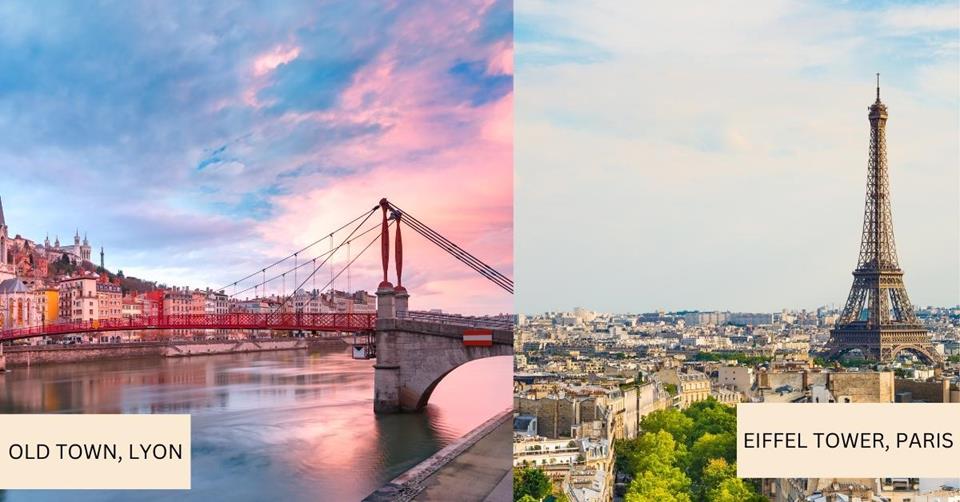
Lyon for 3 days
Lyon is a city located near the French Alps. It is the third largest city in France and is home to a couple of fascinating Roman ruins is a gateway to Switzerland, which you could reach with less than 2 hours of driving and a train ride. Visiting Lyon during the winter can be a haven for skiers as it is a perfect skiing place.
If you’re coming from Paris to Lyon, it is highly recommended to take the train, which has a travel duration of almost 2 hours and covers a distance of 427 km. The cheapest option is to ride a bus; other options are flying and driving.
Nice for 3 days
If you have 3 weeks in France and Spain, you have to see southern France. Nice is a picturesque gem located on the French Riviera. It has good food, fine wine, pristine beaches, sophisticated architecture, and everything you could ever want during a vacation. Nice’s carnival is also one of the biggest carnivals in the world.
The most recommended mode of travel from Lyon to Nice is by train, which has a travel duration of more than 4 hours and covers a distance of 543 km. The cheapest option is via bus, and other options include flying, using Rideshare, or driving. This destination is interchangeable with Cannes or Marseille, depending on the preference.
Perpignan/Pyrenees for 3 days
Perpignanis the prefecture of the Pyrénées-Orientales department in Southern France. It is a medieval city well-known for its cultural history, gastronomy, and wine production. It is also the perfect destination for an early autumn getaway.
The most recommended mode of transport from Nice to Perpignan is by bus, with more than six hours of travel. The cheapest option is also by bus via Nice airport T2, but the travel time is a little longer than seven hours.
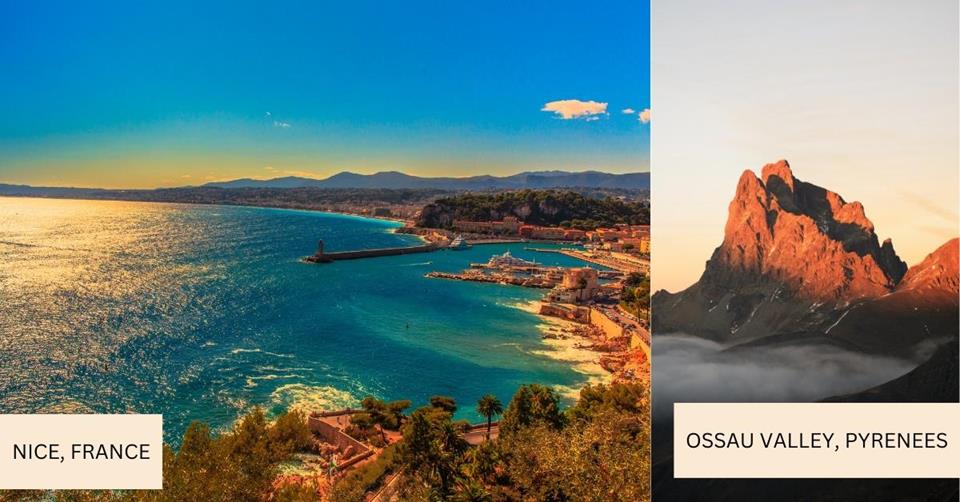
Barcelona for 3 days
Barcelona is one of the most visited cities by tourists in Spain, rivalling only Madrid. It is a city on the coast of Northeastern Spain. It is well-known for its beaches, good weather, and art, specifically the iconic Gaudi’s works, 30 Michelin-starred restaurants, and the Barcelona Football club.
The easiest way to get to Barcelona is by train, which only takes 1 hour and 30 minutes travel time. Renfe SNCF is the railway system that operates the trains from Perpignan to Barcelona. The cheapest option is by bus. If you had to drop off your rented vehicle in Perpignan, you could surely rent another one in Barcelona.
Valencia for 2 days
Valencia is Spain’s third most populated municipality, well-known for being home to paella and other delicious Spanish dishes. It is also famous for its peculiar museums, quirky festivals, and sandy beaches.
The train is the most recommended option to reach Valencia if you’re from Barcelona. The travel time takes almost three hours and is operated by Renfe Viajeros. The cheapest option is by bus. However, Valencia could be swapped or skipped if you prefer to spend more time in other cities.
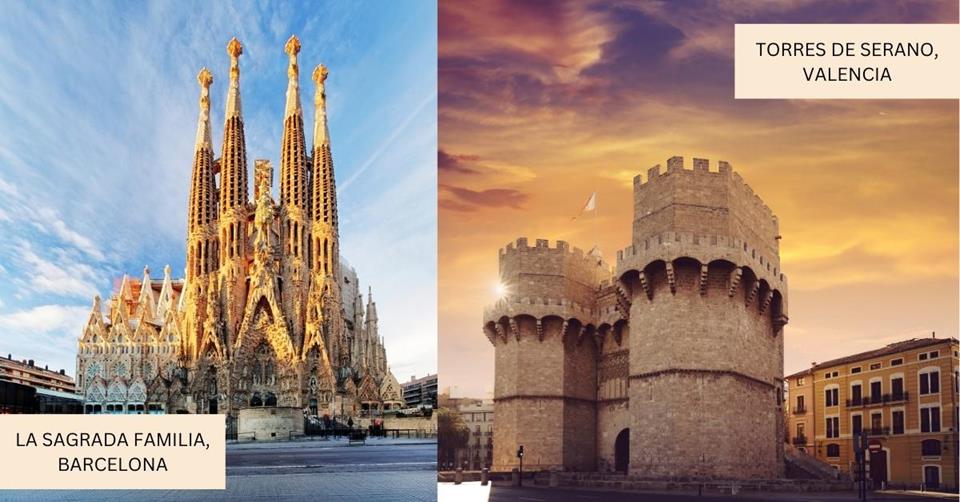
Madrid for 3 days
Visiting Spain without visiting its capital, Madrid would be an incomplete travel itinerary. If other cities in Spain are filled with various art pieces and museums, those are just the tip of the iceberg regarding the sheer volume of art pieces found in Madrid.
So much so that this city is dubbed the artistic centre of Spain, some of the galleries here showcase Picasso and Velazquez’ works.
Besides being an art centre, Madrid is also famous for their food and old-fashioned theatres dating back to the 18th century. The most recommended option to get to Madrid from Valencia is via train, which has a travel duration of almost 2 hours. The cheapest option is by bus, but you can also drive or fly.
Itinerary #2: Western Region for 20 days
The second itinerary features an exploration of the Western Regions. It is best for those who are fond of castles and love water activities, such as surfing, as there are tons of port cities included here.
You could rent a car and then fly or fly and take the train or bus if you want to travel at a more affordable rate. Like the first itinerary, the start and end points are Paris and Madrid, so this trip could be made the other way around.
Paris for 2 days
You can spend 3 weeks in France and Spain and not see Paris. It’s is one of the most beautiful cities in the world, known for its high-quality gastronomy and cafe terraces. This city is a perfect starting point as you can have day trips to many places besides seeing its landmarks up close.
If you’re planning on acquiring a rental car during your travel, make sure there’s a drop-off at Bordeaux, Bayonne, or any nearby city for the rental company.
Caen and Mont Saint-Michel for 3 days
Caen is a commune in Northwestern France well-known for its historical buildings built during William the Conqueror’s reign. On the other hand, Saint Michel is a neighbourhood located in Paris’ 5th arrondissement, within the Quartier Latin district.
The most recommended option from Caen to Paris is by train, which has more than three hours of travel. Other options include riding the bus or driving. Driving takes more than two hours, while riding the bus takes almost four hours.
Nantes for 3 days
Nantes is a wealthy medieval trading port and the sixth largest city in France, located at Loire-Atlantique in the Loire. It is well-known for its numerous landmarks, trendy venues, and vineyards that produce world-class Muscadet white wine.
The most recommended option for travelling to Nantes if you’re from Caen is by train via Le Mans, which has a travel duration of almost three hours. Using Rideshare is the cheapest, and other modes of transport are by riding the bus, driving, and flying.
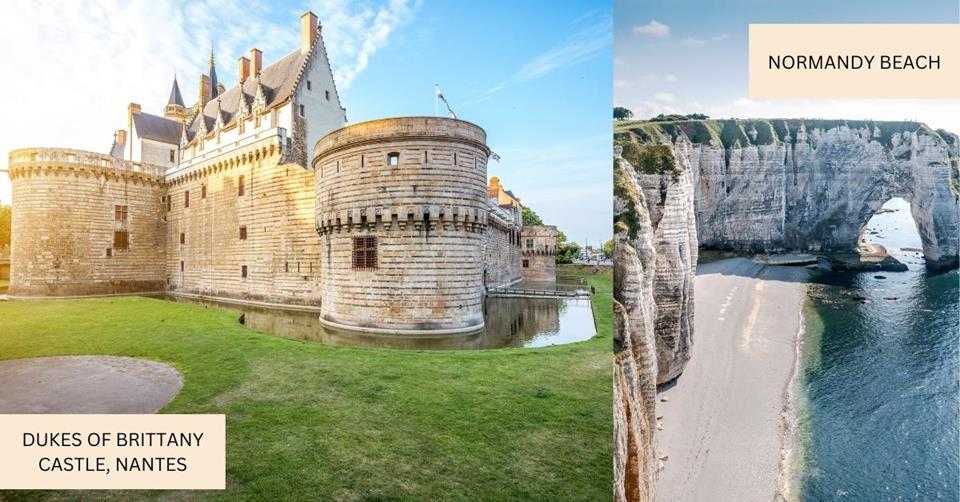
Bordeaux or Bayonne for 3 days
Bordeaux is a port city on the river Garonne in Southwestern France. It is an excellent spot for surfing and is the world capital of wine and home to the world’s leading wine fair, VInexpo. It is also filled with castles.
Bayonne is another city that is also famous for its surfing spots. It has fewer crowds than Bordeaux for those who prefer a more serene environment. It also has a world heritage site and boasts exceptional cultural establishments.
Bordeaux and Bayonne are about a two-hour drive or train ride from each other. To reach Bordeaux, if you’re coming from Nantes, it is highly recommended to take the train, which has a travel duration of more than four hours.
The cheapest option is to ride a bus; other options include driving or flying. For those who availed of car rentals, Bordeaux or Bayonne could be your drop-off points unless you ask the car rental company if you can take the car to Spain and get a green light.
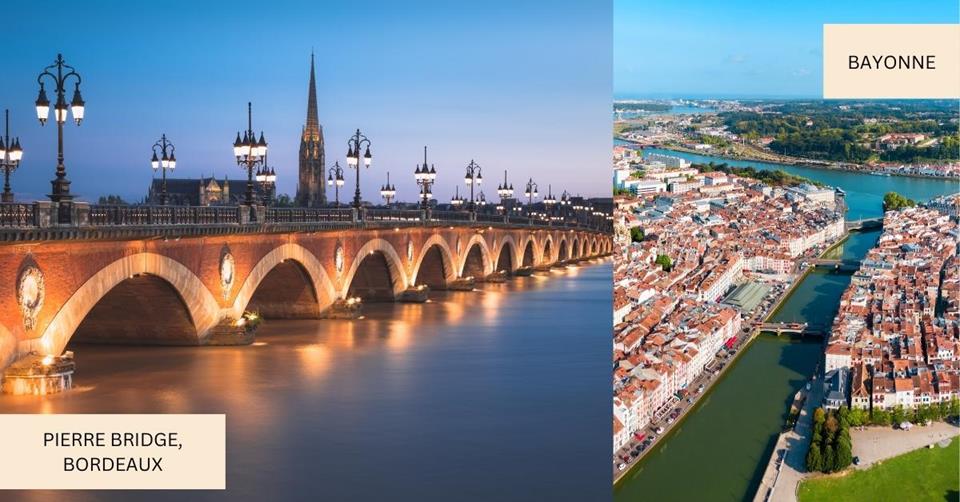
Bilbao for 2 days
If you want to avoid the tourist trail during your 3 weeks in France and Spain, Bilbao should be on your list. Bilbao is the tenth largest city in Spain, located in the province of Biscay. It is famous for its golden beaches, museums, and pintxos, its local version of tapas.
The most recommended option to reach Bilbao if you’re coming from Bordeaux is by bus, with a travel time of more than four hours. ALSA is the bus line that operates trips from Bordeaux to Bilbao every four hours. If you’re planning on driving, you can check here if there’s a car rental.
Zaragoza for 3 days
Zaragosa is an autonomous community of Aragon, Spain. It is famous for its local cuisine, folklore, and various landmarks. Zaragosa, Aljaferia, and La Seo all have buildings forming part of the Mudejar Architecture of Aragon, a UNESCO heritage site.
The bus is the most recommended mode of transportation from Bilbao to Zaragosa, with a travel duration of four hours. The cheapest option is Rideshare; other options are riding the train, driving, or flying. Driving takes almost three hours while boarding the train takes nearly five hours.
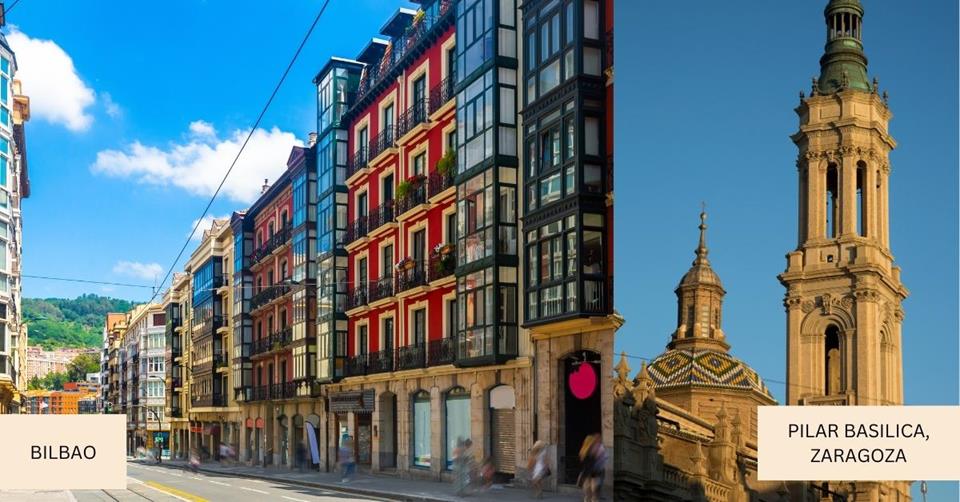
Madrid for 4 days
Madrid is a city full of surprises. Aside from being the artistic centre of Spain, it is also known as the starting point of Spain’s six significant roads. One of the world’s oldest restaurants, tasty calamari sandwiches can also be found here.
Boarding the train is the most recommended transportation from Zaragosa to Madrid. It has a travel duration of more than an hour and is operated by Renfe Ave. Driving takes more than three hours, while riding the bus takes more than four hours.
THINGS TO DO IN FRANCE AND SPAIN (per city)
Now that you know what the itinerary for 3 weeks in France and Spain looks like for you, it’s time to show you the list of must-sees and must-do in every city. It’s categorised per city to help you navigate. You’ll also see some tour suggestions so you can check which attractions can be combined together.
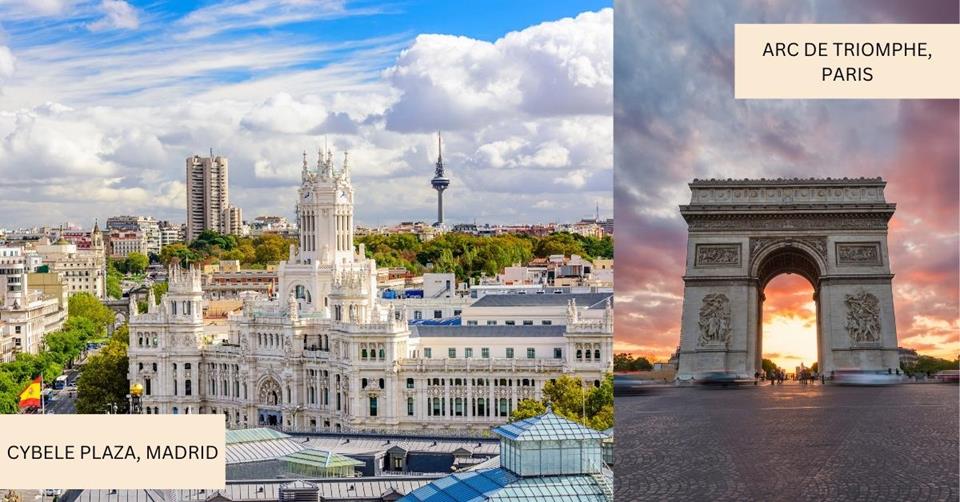
Paris
- Eiffel Tower – you can skip the line and hike up the stairs or take the elevator
- Notre-Dame Cathedral
- Louvre Museum – get a skip-the-line ticket without a guide or with a live guide
- Pantheon
- Arc de Triomphe – scale the rooftop
- Pompidou Centre
- Seine River Cruise – you can book a 1-hour cruise or a cruise with a yummy gourmet dinner
- Champs-Elysees
- Sacre-Coeur
- Musee de Montmartre
- Moulin Rouge Cabaret Show – enjoy with champagne or a dinner
- Musee d’Orsay
- Luxembourg Gardens
- Catacombs of Paris – explore with an audio guide
- Sainte-Chapelle
- Grand Palais
- Versailles – join a guided tour
- Tuileries Garden
- Shakespeare and Company
Lyon
- Day trip to Geneva, Switzerland
- Parc de la Tete d’Or
- La Basilique Notre Dame de Fourviere
- Cathedrale Saint-Jean-Baptiste
- Rhone Valley – book a wine-tasting tour
- Place Bellecour
- Musee des Confluences – get your ticket in advance
- Teatro Galo-Romano
- Vieux Lyon – join a food tour or an Old Town walking food tour
- Musee Cinema et Miniature
- Saone River – get on a cruise and visit UNESCO sites or a cruise with a dinner
- Musee de l’imprimerir et de la
- Musée des Arts de la Marionnette
- Fresqye des Lyonnais
- Bartholdi Fountain
- Lyon Botanical Garden
Nice
- Explore Nice via a hop-on, hop-off bus tour or a 2-hour scenic on a 3-wheel vehicle or on a panoramic e-bike tour or a walking tour with a Castle Hill trip
- Visit the Cours Saleya Market
- Relax on the beaches of Nice
- Day trip to Eze, Monaco, and Monte Carlo – see the tour price
- Musee Matisse
- Villefranche – there’s an e-bike tour with a local guide
- Promenade des Anglais
- Sail along the French Riviera – book a full-day boat tour or on a private solar boat cruise
- Castle of Nice
- Molinard Perfume – join a perfume-making workshop
- Field of Lavender and Gorges of Verdon
- Saint Paul de Vence – there’s a wine-tasting tour combo with this site
- Opera de Nice
- Provence Village (Lavander Fields) – do a village tour with a winery visit
- View art at the Matisse Museum
- Baroque Royal Route and Salt Road Train Trip – read the tour reviews
- Parc Phoenix
- Join a food tour – local foods from Nice or this Old Nice food tour or a walking food tour wine wine-tasting
- Discover the Marc Chagall National Museum
- Day trip to Saint Tropez – check the tour price first
Perpignan/Pyrenees
- Palais des Rois de Majorque
- Perpignan Castillet
- Hotel de Ville
- Musee des Monnais et Medailles Joseph Puig
- Fort de Salses
- Casa Xanxo
- Torreilles Plage Argeles
- Castelnou
Barcelona
- Mount Tibidabo
- Barceloneta Beach
- Basilica de la Sagrada Familia – skip the online and explore with an audio guide or combine with Parc Guell
- Casa Mila
- Barcelona Aquarium – suitable for young children, buy your ticket in advance
- Palau de la Musica Catalana
- Park Güell- get your ticket in advance, there’s a limit per day ticket sold for Parc Guell
- Casa Batllo
- Enjoy tapas and wine – book a walking tour
- Bogatell Beach/Playa de Bogatell
- Magic Fountain of Montjuic – ride a round-trip cable car
- Museo Picasso de Barcelona
- Explore Montserrate – join a half-day tour
- Camp Nou
- Trio-day trip and cover Spain, France, and Andorra – check the itinerary
- Walk around Barri Gotic
- Go kayaking and snorkelling in Costa Brava – book an affordable tour
Valencia
- La Lonja de la Seda
- Oceanografic – perfect for young children, get your entrance ticket
- Albufera Natural Park
- La Ciutat de les Artes i les Ciencies de Valencia
- Cuevas de San Jose – sign up for a half-day guide tour
- Mercado Central
- Plaza de la Virgen
- Hike and swim at Montanejos – book a group tour
- Bioparc Valencia
- Torres de Serranos
- Playa del Saler
- Sail on a Catamaran Cruise – check the tour price
- The medieval town of Requena
- Enjoy wine and tapas tasting in an 11th-century historical monument – check this trip
- Join a cooking class
Madrid
- Sobrino de Botin
- Royal Palace – get your fast-access ticket
- Plaza Mayor
- Museo Nacional del Prado – purchase your ticket in advance
- Parque Natural de Peñalara and Sierra de Guadarrama National Park
- Visit Real Madrid’s Stadium (Santiago Bernabéu Stadium) – join a Bernabeu Stadium tour
- Buen Retiro Park and the Crystal Palace
- Puerta del Sol
- Fuente de Cibeles and Gran Via
- Temple of Debod
- Basilica de San Francisco el Grande
- Enjoy wine and tapas tasting – join a group tour
- Puerta de Alcala
- Watch a flamenco show with dinner
- National Museum of Romanticism
- Day trip to Avila and Segovia and visit historical sites or go to Toledo with a local guide
Caen & Mont Saint-Michel
- Mont Saint Michel Museums
- Cider Tasting
- Pointe du Hoc
- Normandy Beach – book a Normandy D-Day tour, pick-up from Paris
- Caen Castle
- Le Grand Bunker – Museum of the Atlantic Wall
- Site Fortifié Hillman
- Memorial Free French Soldiers
- Radar Museum 1944
- Château de Fontaine-Henry
- D-Day Museum
- Liberators Museum Normandy 1944
- British Normandy Memoria
Nantes
- Get a Nantes City Card Pass – see the price first
- Chateau des Ducs de Bretagne
- Explore Nantes on an electric bike – join the tour or via a walking tour with a local guide
- Musee d’Arts de Nante
- Cathedrale Saint Pierre et Saint Paul
- Chateau du Bois-Huaut – book a cellar tour with wine-tasting class
- Quartier Bouffay
- Ile Feydeau
- Try Jet-skiing – there’s a jet-ski lesson you can check out
- Quartier Graslin
- Jules Verne – there’s an outdoor escape game or this Vikings – The Relic of Odin game
- Jardin des Plantes
- Quad ride from Nantes to La Baule – see the tour reviews
- Les Machines de I’Ile
- Aiport transfer from the airport to Nantes
Bordeaux
- La Cité du Vin – learn everything about the wine of Bordeaux by joining this tour
- Place de la Bourse
- Bordeaux Cathedral
- Saint Emilion – book a day trip sightseeing with wine tasting
- Musee d’Aquitaine
- Gran Teatro de Burdeos
- Bordeaux Museum of Fine Arts
- River Garonne – enjoy a cruise with a glass of wine
- El Espejo de Agua
- Jardin Public
Bayonne
- Surfing
- Cathedrale Sainte-Marie de Bayonne
- Musee Basque
- Cerreau des Halles
- Bayonne Botanical Garden
- L’Atelier du Chocolat-Musee du Chocolat – book a chocolate tasting
- Plaine d’Ansot de Bayonne
- Miramar Beach
- Milady Beach
- Marinella Beach
- Plage d’Ilbarritz
Bilbao
- Explore Bilbao via a boat tour or a 3-hour bike tour or a customised local tour
- Palacio Euskalduna
- Plaza Nueva
- Guggenheim Museum – book a private guided visit
- Casco Viejo
- San Juna de Gaztelugatxe – there’s a combo tour includes Gernika and Mundaka too or with San Sebastian instead
- Museo de Bellas Artes de Bilbao
- Enjoy the Basque Coast – see the price for this Basque Coast tour
- Catedral de Santiago
- Bizkaia Archeological Museum
- Rioja Winery – join a 2-winery tour
- Parque Dona Casilda de Iturrizar
- Join a food tour – Basque food tour or this food and history tour or this Bilbao food tour with wine or high-end food tour
Zaragoza
- Discover the town via a private tour with a local guide or a self-guided scavenger hunt walking tour or an Old Town tapas walking tour
- Basilica de Nuestra Senora del Pillar
- Aljaferia Palace
- Bardenas Reales of Navarre – there’s a 4×4 tour
- Museo del Foro de Caesaraugusta
- Go Kayaking – see the tour price
- Fluvial Aquarium of Zaragosa
- Go wine-tasting – with tapas
- Educational Museum of Origami
- Try a cooking class – with a midday market tour
- La Lonja de Zaragosa
- Do a Scavenger Hunt – a self-guided walking tour
- Aragonese Institue of Art and Contemporary Culture
- Visit an Olive Farm – book an olive oil tour with a Belchite Old Town stop
- Museo Goya
ACCOMMODATIONS IN FRANCE AND SPAIN (per city)
Here’s a list of places I recommend for the following cities. It’s arranged per city and has options for affordable, mid-range, and luxury accommodations.
Paris
- Affordable: Hotel des Belges or City Inn Paris
- Mid-range: B&B Hotel Paris or Au Pacific Hotel
- Luxury: Pullman Paris or citizenM Paris
Lyon
- Affordable: Alter’hostel or Away Hostel & Coffee Shop
- Mid-range: Bayard Bellecour or Hotel Edmon W Lyong Part-Dieu
- Luxury: Hotel Le Roosevelt or Cour des Loges Lyon
Nice
- Affordable: Villa Saint Exupery Beach Hostel or Hostel Ozz Nice
- Mid-range: Hotel Byakko Nice or Villa Berlioz or Centrum Nice
- Luxury: Hotel de France by AMMI or Hotel La Villa Nice Victor Hugo or Hotel Florence Nice
Perpignan/Pyrenees
Barcelona
- Affordable: Unite Hostel or Factory Hostel
- Mid-range: Sixties Ramblas or Violeta Boutique
- Luxury: Vincci Gala or Ohla Barcelona or ME Barcelona
Valencia
- Affordable: Hostal Antigua Morellana or Colors Rooms
- Mid-range: Ad Hoc Carmen or Venecia Plaza Centro
- Luxury: Vincci Lys or Petit Palace Plaza de la Reina
Madrid
- Affordable: Olblanc Plaza de Espana or Hostal Arrate
- Mid-range: II Castilla Madrid or Hotel Liabeny
- Luxury: Pestana CR7 Gran via Madrid or Palacio de Atocha
Caen & Mont Saint-Michel
Bordeaux
- Affordable: Hotel du Theatre or Central Hostel
- Mid-range: ibis Hotel or B&B La Maison Galiene or Gabylou
- Luxury: Maison Ferdinand B&B or Best Western Premier or Quality Hotel or Hotel de Tourny
Bayonne
- Affordable to Mid-range: Hostel 20 or ibis Hotel or Hotel Cote Basque
- Luxury: Hotel Villa Koegui or Hotel des Basses Pyrenees or Boutique Hotel Un Appart en Ville or Libertitu B&B
Bilbao
- Affordable: Pension Alicia B&B or LaTroupe La Granja
- Mid-range: Bilder Boutique Hotel or Pension Basque Boutique or Casual Gurea
- Luxury: Hotel Iluion San Mames or Sercotel Arenal or Hotel Carlton or Radisson Collection
Zaragoza
- Affordable to Mid-range: Hotel Rio Arga or Casa Palacio de los Sitios or Hotel Goya or Hotel Zentral Ave
- Luxury: Catalonia El Pilar or Aparthotel Los Girasoles or Innside by Melia Zaragoza or NH Ciudad de Zaragoza or NH Collection Gran Hotel
SUMMARY OF 3 WEEKS IN FRANCE AND SPAIN ITINERARY
France is a perfect getaway destination as it has something to offer everyone. It is filled with beaches and mountains and offers tons of activities, but for those who prefer a laid-back vacation, they also have the countryside.
On the other hand, Spain offers exciting activities that aren’t available anywhere else, such as some of the world’s scariest footpaths and ziplining between Spain and Portugal. The northern coastline also hosts annual surfing competitions, and aside from that, they have loads of unique islands you could explore.
I hope these travel itineraries for 3 weeks in France and Spain have helped plan your own travel itinerary.
SAVE THIS TRAVEL ITINERARY ON YOUR PINTEREST:

